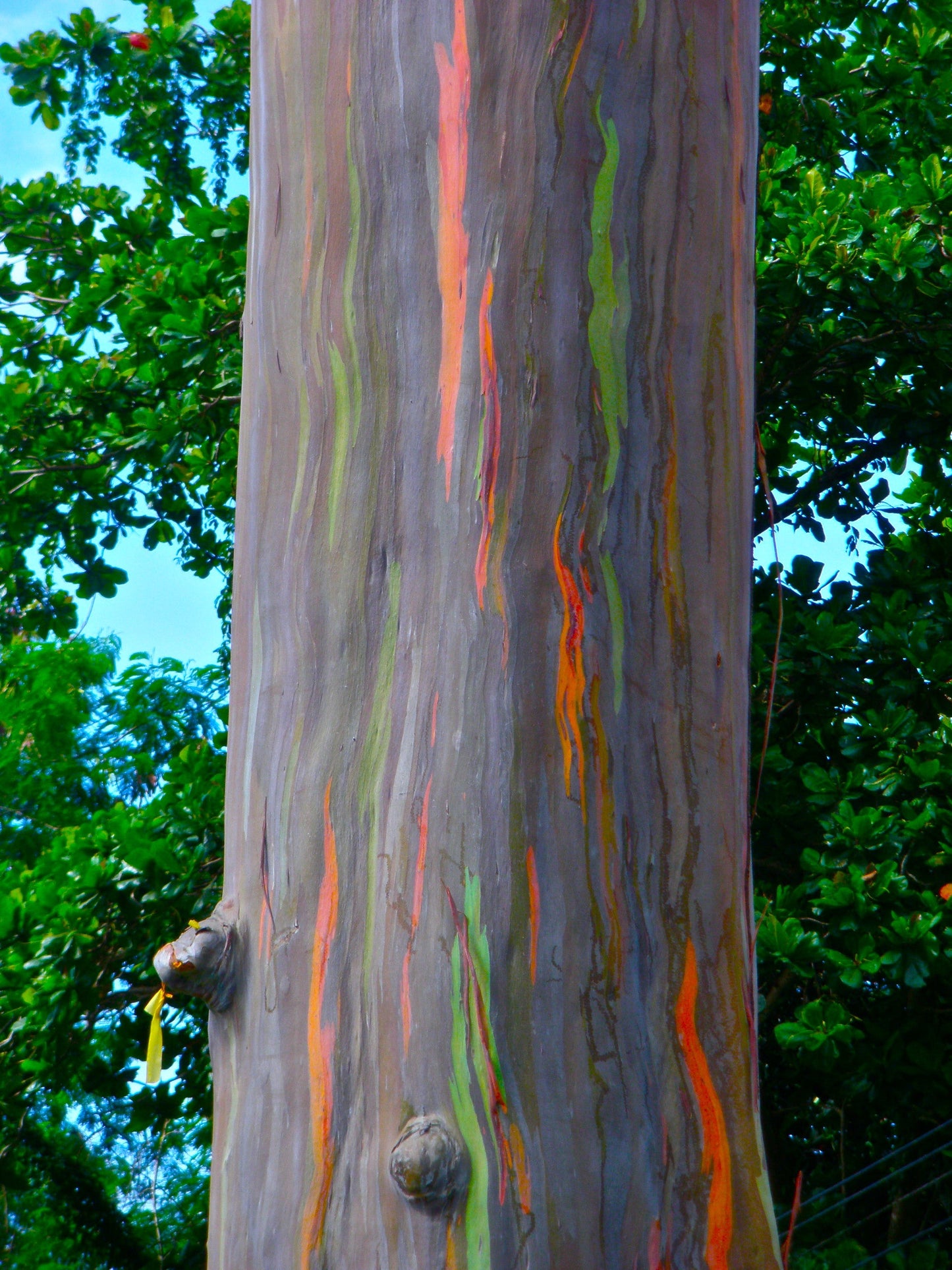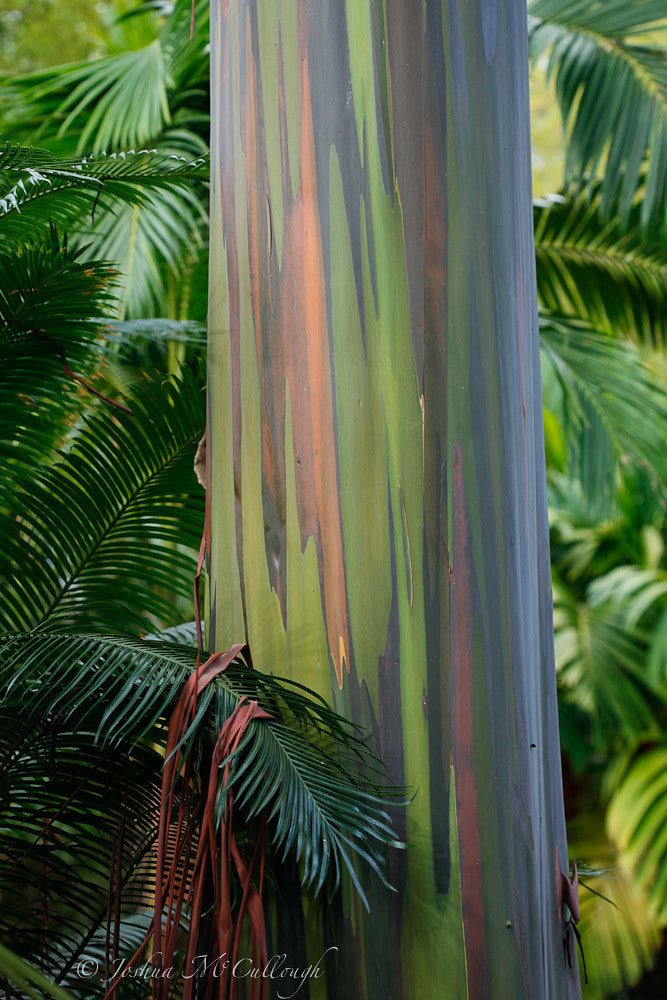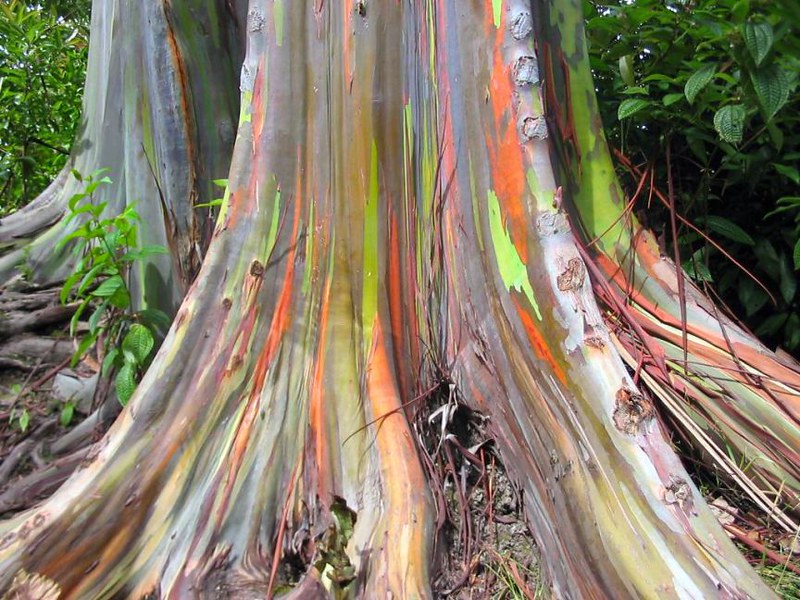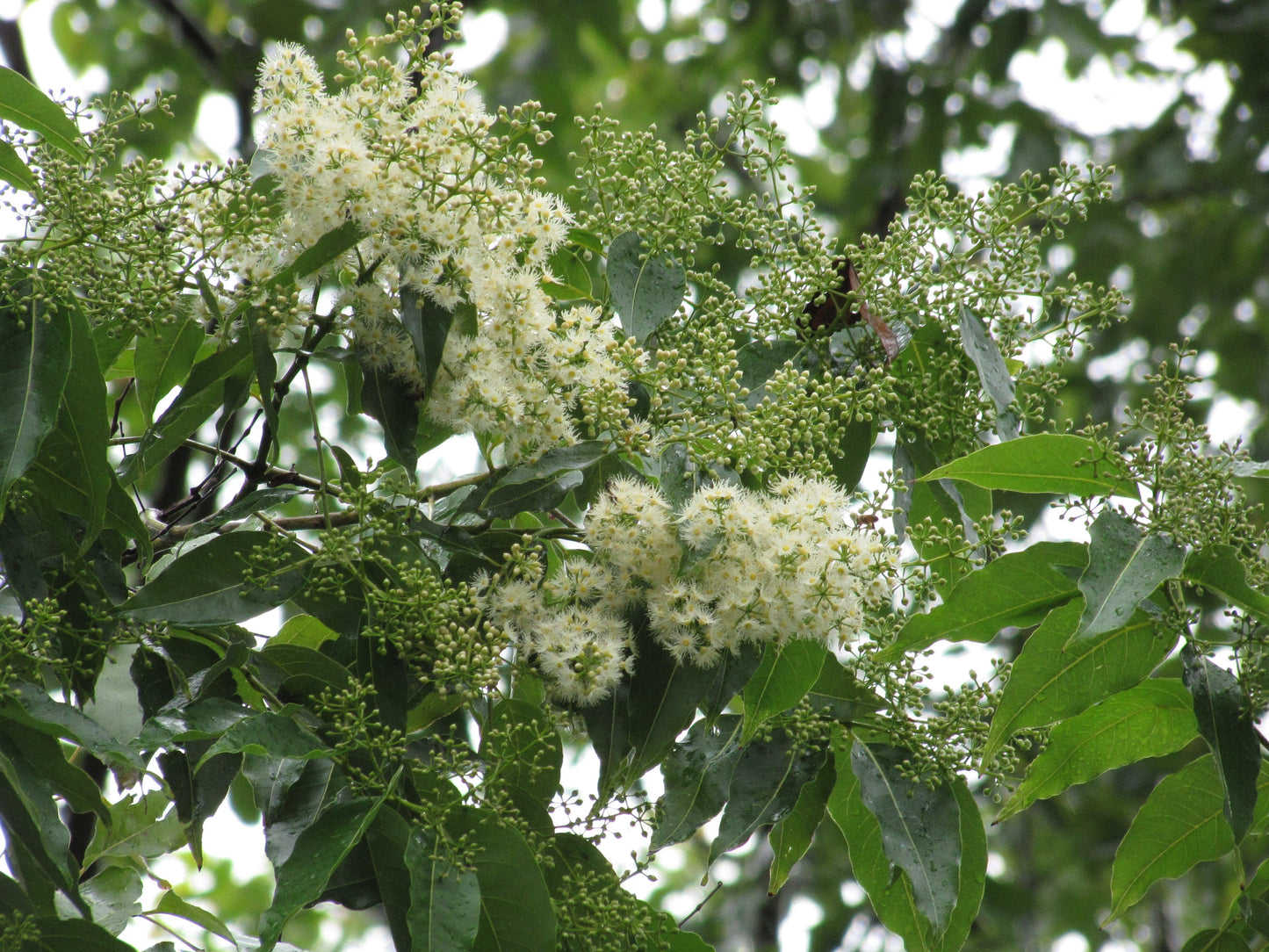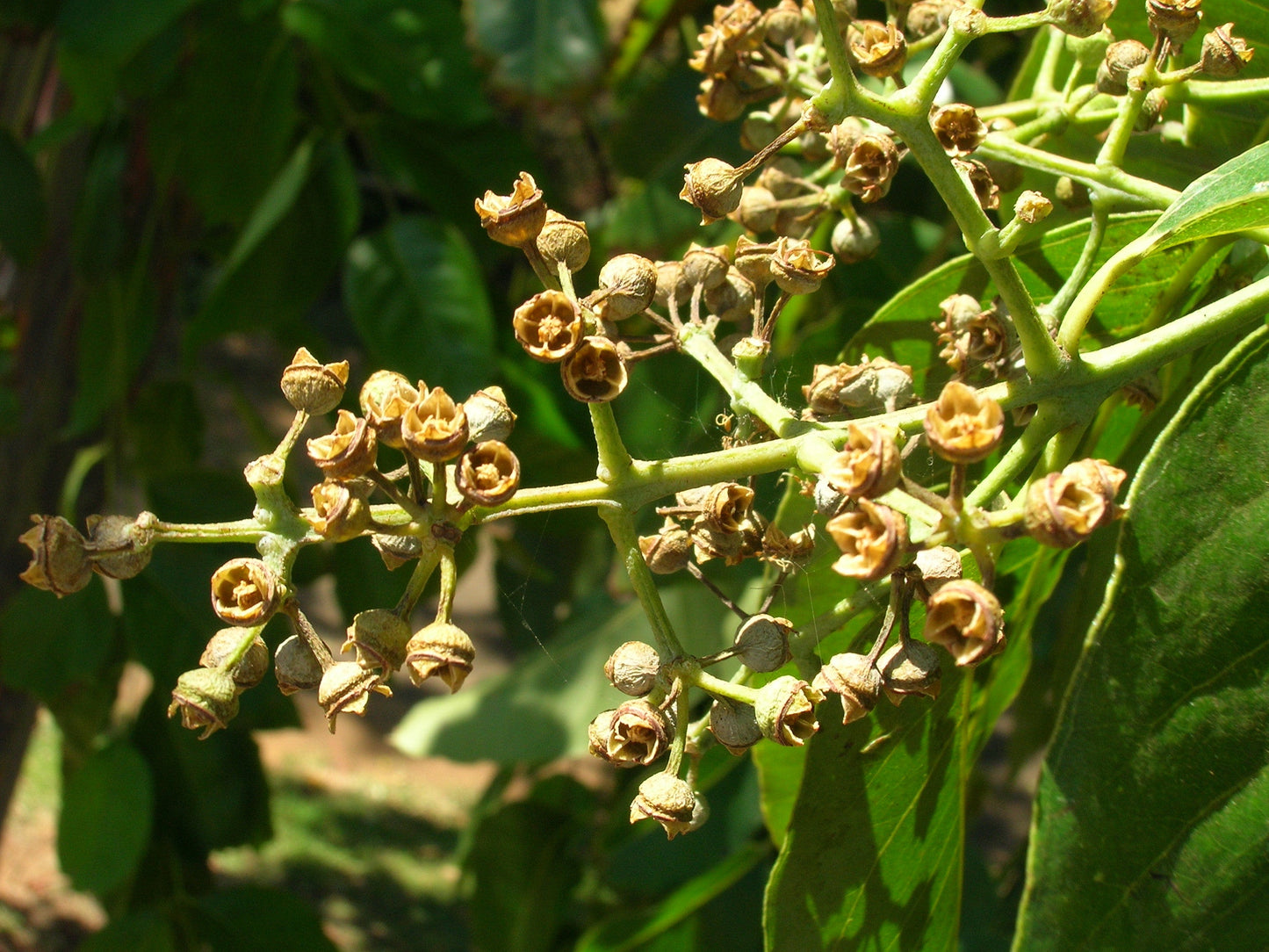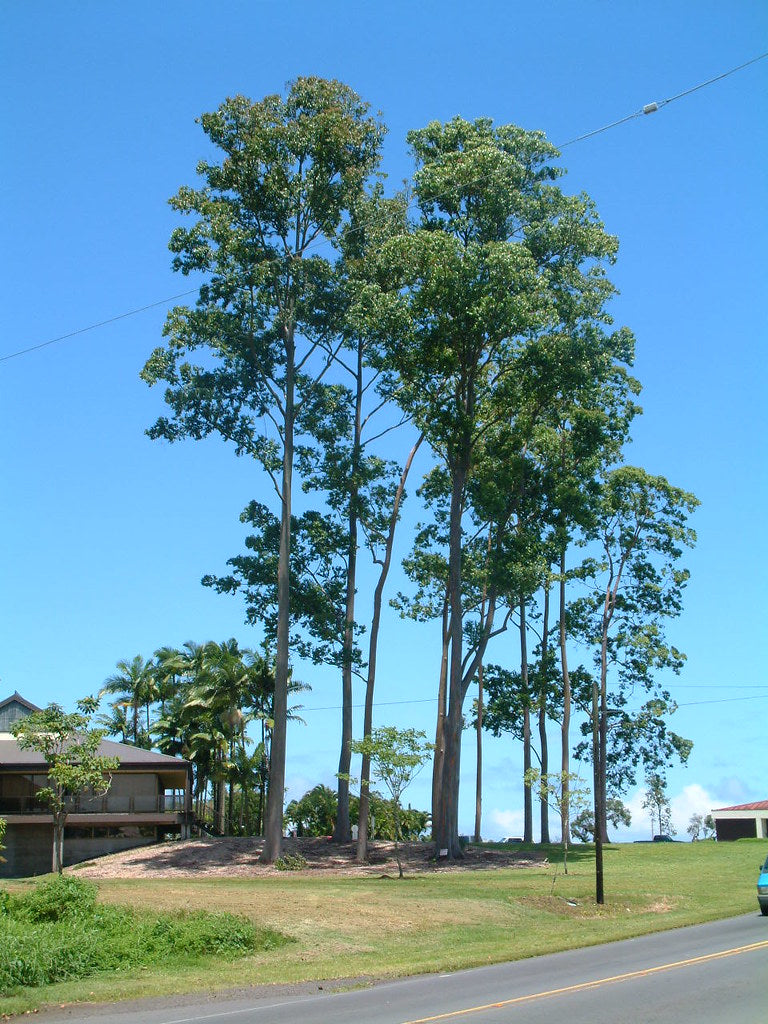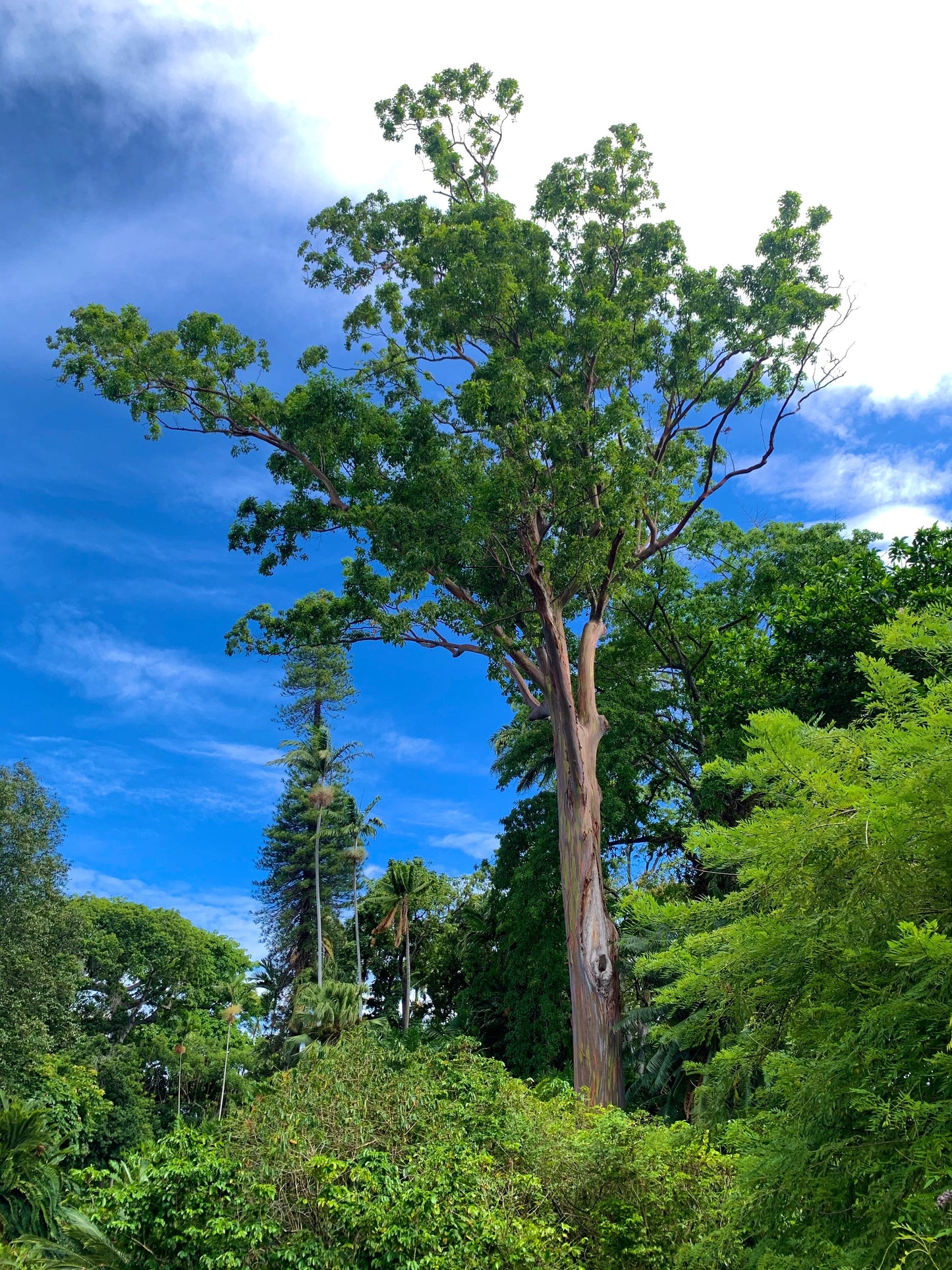Floridaseeds
Rainbow Eucalyptus Eucalyptus deglupta 50 Seeds
Rainbow Eucalyptus Eucalyptus deglupta 50 Seeds
Couldn't load pickup availability
The Rainbow eucalyptus is a tropical tree that has incredible, multi-colored, rainbow-hued, peeling bark. It is a very large, fast-growing, broadleaved evergreen tree that is native to moist humid tropical forested areas with high rainfall in New Guinea, Indonesia and the Philippine Islands (Island of Mindanao). It is the only eucalyptus tree that is indigenous to the northern hemisphere. In its native habitat, it will mature to as much as 250' tall with a trunk diameter of 6'. Outside its native habitat, it will typically grow much shorter (to 100-125' tall). It is perhaps best noted for its smooth orange-tinted trunk bark which peels in summer to reveal a unique and sometimes stunning multi-colored bark (as described by the common name of rainbow eucalyptus) consisting of streaks of pale green, red, orange, gray and purple-brown. Acuminate, lance-shaped leaves (to 6" long) are aromatic when crushed. Tiny white flowers in axillary or terminal compound inflorescences (panicles of 7-flowered umbels) bloom at various times during the year depending upon location. Trees are a source of hardwood timber. Large landscape tree where winter hardy. In Hawaii, it is planted as a street tree and shade tree. Winter hardy to USDA Zones 10-11 where this tree will grow well in rich, medium to wet soils in full sun.
Growing Instructions for the Rainbow Eucalyptus
The seeds need to be planted when received or stored in a refrigerator until they are planted. The seeds have a period of dormancy and need to be cold stratified to break their dormancy. 1. Soak the seeds for 24 hours. 2. Place the seeds in a plastic bag and seal it. Store the bag in a refrigerator for two weeks. 3. The seeds like moist, well-drained soil. Use a sterile seed starter mix, if available. It prevents soil pathogens from damaging the seeds and the seedlings. If not available, then make a mixture of half potting soil and half sand, perlite or vermiculite. 4. Put the soil in a pot. 5. Sow the seeds on the soil and lightly cover them with sand. 6. Water the seeds from underneath, by filling a plant tray under the container with water. Keep the soil moist but not wet. 7. Place the pots in an area with warm temperatures in full sun or part shade. 8. When the seedlings are a few inches tall, they can be transplanted.











